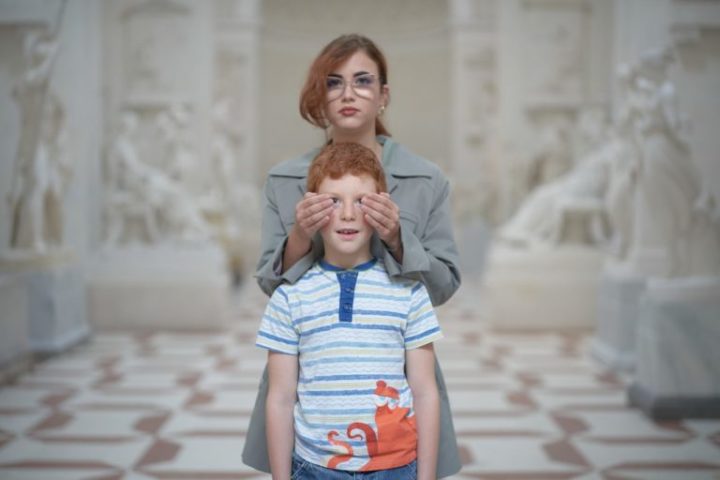
Laura Casarsa
Communication Consultant, Museum Gypsotheca Antonio Canova, Possagno (Italy)
Museums have no borders,
they have a network
April 5, 2020
Keywords: accessibility; crowdfunding; MuseoCanova
Our journey began in July 2019, when we welcomed a group of blind children to the Museum Gypsotheca Antonio Canova and realised how far we had to go in order to define ourselves as an accessible museum.
We started to think about what accessibility meant to us: no longer simply a guarantee of equal access to all visitors, but rather an inclusive, high-quality and participative experience.
To bring about this change, we focused on four main goals:
1. Overcome the main architectural barriers that exist today.
2. Create a space inside the museum, where children can freely experiment with the materials used by Canova, such as plaster and clay, to develop their creativity: a place where the slogan is ‘you have to touch!’.
3. Ensure the well-being of visually impaired visitors by creating a visitor experience that best meets their needs, thanks to the creation of tactile visits and Braille captions.
4. Provide training for our educators on how to communicate the beauty of our museum to visually impaired visitors.
Our main obstacle: funding
Let’s take a step back in time. The Museum Gypsotheca Antonio Canova preserves the historical and artistic heritage of Antonio Canova, one of the greatest sculptors of the neoclassical period. The museum complex is located in a village of 2,000 inhabitants (Possagno) in the Veneto region of Italy, northwest of Venice. It consists of the artist’s birthplace and the gypsotheca, which houses the original plaster models that served as the basis for the marble pieces displayed in the most important museums in the world. As with many small museums, the survival of the institution depends on the 50,000 tickets issued every year. But this revenue is insufficient to develop specific projects, and there is no additional funding available to improve the museum’s accessibility.
What to do then?
In October 2019 we decided to involve the local community and our audience in a crowdfunding campaign on the platform retedeldono.it. The result was magical: we realised just how much the whole community felt involved in our quest to enhance accessibility and wanted to support us.
The project soon evolved into an awareness campaign in which museum guides, teachers and followers spoke out on the importance of providing all visitors with the tools to appreciate Canova’s works.
The campaign ran for four months, until 31 January, 2020. It was an unexpected success. With the involvement of both local companies and individual visitors, we raised 12,332 EUR and also won the Rete del Dono Award, an initiative to reward non-profit organisations wishing to launch crowdfunding campaigns to finance cultural projects. The 3,000 EUR prize money offered by UBI bank was added to our fund.
We are working to meet all the objectives listed above
Launching a communication and crowdfunding campaign on the subject of accessibility was important because it allowed us to attract the attention and encourage the collaboration of different partners. For instance, a company specialised in 3D printing offered to produce replicas of the sculptures, and a local foundation dedicated to ensuring the full inclusion of disabled people in society – especially those with visual disabilities – will provide us with museum maps in Braille.
What have we learnt from this experience?
1. While working on museum accessibility, it is necessary to take into account new points of view on the visitor experience. Accessibility is not just about overcoming architectural barriers, but also guaranteeing an optimal quality visit for everyone: children, families, students, seniors, and disabled and foreign visitors. This is possible by providing explanatory materials suitable for different age groups, specially trained museum guides and tailored guided tours for families.
2. Accessibility impacts everyone. This is why it is important to communicate on the museum’s accessibility initiatives, and if necessary, to ask visitors and followers for help.
3. Improving accessibility requires the contribution of each museum department: from communications to curatorship, to members of the Board. Only by working as a team is it possible to achieve goals.
References and resources:
More information about the Rete del Dono Award: www.retedeldono.it/premio/cultura
Video presentation of the #MuseoSenzaBarriere campaign: https://www.youtube.com/watch?v=U-BrsBReqas
Photo credits: © Otium Studio/ Giulio Favotto
Opinions expressed in the article do not commit ICOM in any way and are the responsibility of its author.
To participate in our newest ICOM Voices call for contributions, click here.
